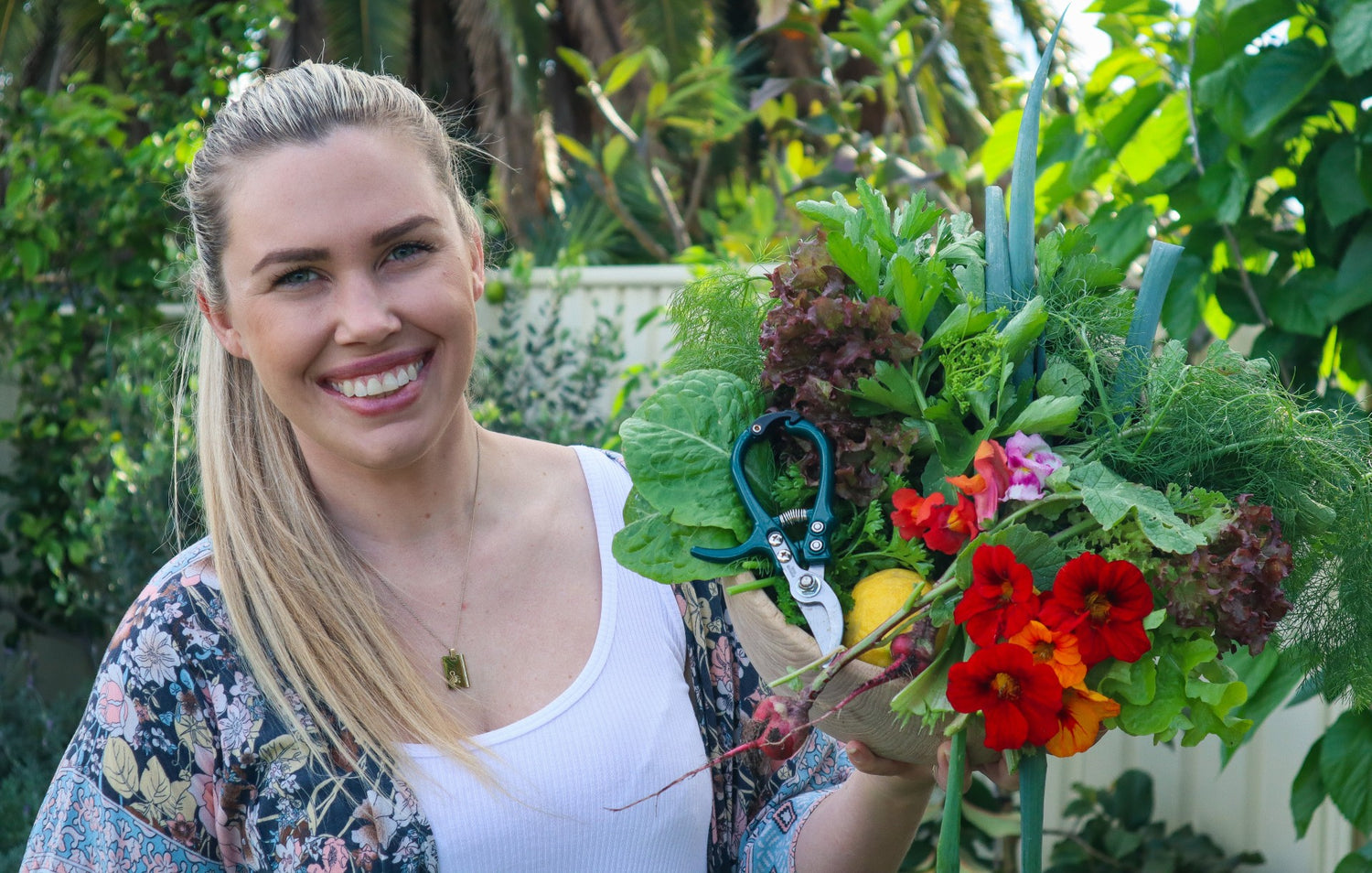Diversity is essential for creating a thriving and sustainable edible garden at home. Each plant type has a different root structure, leaf coverage, height, nutrient absorption and nutrient excretion, and attracts an abundance of insects and wildlife to your outside space. The more diversity we have in plants, the more life we are encouraging both above and below the soil. Diversity also helps reduce severe deficiencies, as all the plants aren’t competing for the exact same nutrients.
Diversity and companion planting are closely related. Companion planting is generally two different plants that grow well together and have a mutually beneficial relationship. With a diverse garden, we want to build on those relationships and continue to add more.
Monoculture (growing a single crop) is a common commercial system of growing; however, it is very unnatural. Nature, when left to grow wild, works together to create balance and flow. Monocultures deplete and degrade the soil by constantly using up the same nutrients. Soil is the key to any healthy, thriving garden, so we want to protect and nurture our soils. The more we put back into the soil in terms of organic matter and nutrients, the better.
Below are just 10 of the many reasons why diversity is so important in the garden.

1. Reduce nutrient depletion
Plants and trees have different root structures and depths. They also use and excrete different nutrients. It is important to grow a wide variety of plants together to access different layers and levels within the soil. Diversity also helps to reduce severe deficiencies, as all the plants aren’t competing for the exact same nutrients.
2. Improve soil health
There is so much going on under the surface of the soil with the relationships between the plant’s roots and micro-organisms. The more diversity we have in plants, the more life we are encouraging beneath the surface.
Build and they shall come.
If you create a healthy and diverse environment, more and more beneficial insects and bacteria will start to appear. You may start to see an increase in worms and other helpful bugs that will get to work and start improving your soil even further.
Leaf litter or fallen leaves will help add nutrients back into the soil, as well as provide habitat and a food source for small insects and wildlife.
Planting certain plants such as legumes (beans, peas) can add valuable nutrients into the soil to act as a natural fertiliser. This will boost the production and health of surrounding plants.

Classic 30m Retractable Hose Reel | Charcoal
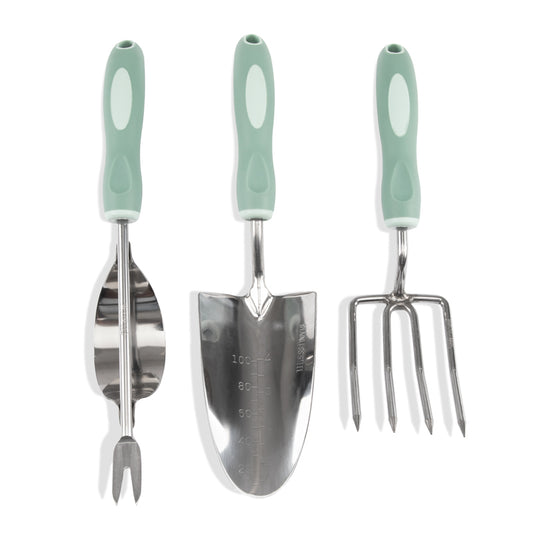
Garden Fork, Trowel and Weeder Set
3. Attract more pollinators
Many fruit and vegetable plants and trees require pollination for fruit to set and mature. Each has a preferred type of insect or animal that will give them optimum pollination. Having a diverse range of plants will attract a diverse range of wildlife to your garden and give you more chances to receive an abundant harvest. It can also be a great idea to plant native species to attract local native pollinators.
4. Create healthy habitats
Just like humans, insects and other wildlife have preferences to where they live and feel safe. That may be tall trees, bushy scrubs, low ground covers, small leaf plants, or large leaf plants. Planting a wide range of plants can help attract more wildlife, which can reduce pest infestations, promote pollination, and provide nutrients from excretions.

5. Spread the risk of failure
Planting your vegetable seedlings in different areas of the garden can reduce the risk of losing an entire crop. If a particular garden bed gets too hot, wind damaged, attacked by bugs, or the soil nutrients are not right, you still have many other chances for success.
‘Don’t put all your eggs in one basket’.
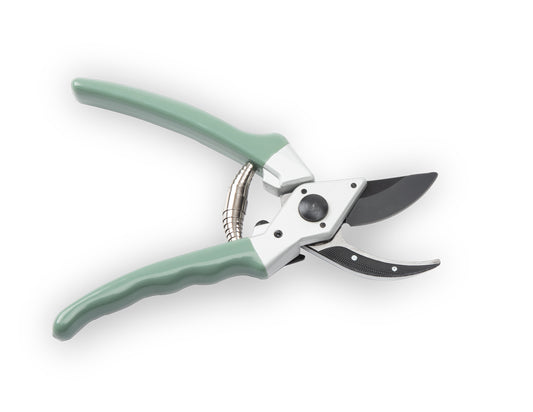
Secateurs 225mm | Sage
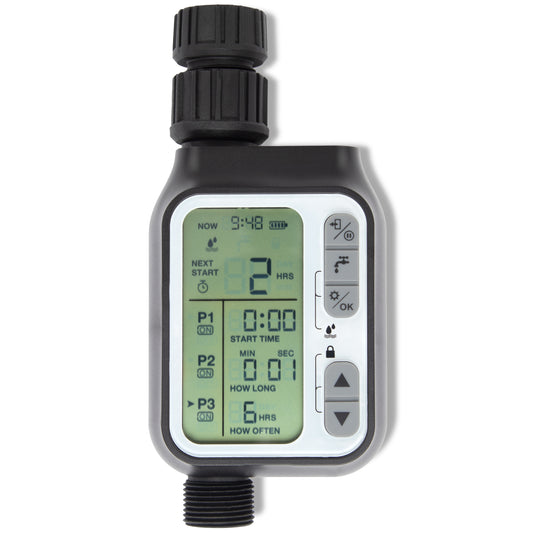
Automatic Tap Timer with Rain Sensor
6. Create a balanced ecosystem
Ecosystems are dynamic and ever-changing with conditions. The diversity of a wide range of plants, insects, and wildlife will allow nature to find balance.
7. Reduce pest infestations
Think of your garden just like a buffet, you may pick and choose what you like, rather than devour the whole cake. When a single crop is planted altogether in a patch or line, it can be more vulnerable to pests and diseases. If a pest finds your patch and decides that it is the perfect snack, you have made it easy for that pest to go from one plant to another. Soon, the whole crop will be compromised. However, with diversity, the pest might not like the surrounding plants so this can slow down the spread of destruction.
Creating a balanced and diverse garden will also attract a diverse range of insects and wildlife that may also help to keep the number of pests down.
8. Reduce weeds
Having more plants and living ground covers will protect the soil from the harsh summer sun, reduce weeds and stop water from washing away nutrients. Weeding is never much fun, and weeds can restrict and inhibit the growth of your garden. Planting a range of plants in your garden and reducing the bare empty spaces can help smother and keep your weeds to a minimum.
If you still need to tackle the weeds in your garden, check out Hoselink’s Stand Up Weed Puller.

9. Build resilience for sustainable gardens
It is so important to build resilient gardens to ensure that the overall health and production of your garden is sustainable long term. If you are constantly battling pests and trying to keep your plants alive, your enjoyment may be severely impacted. This can mean certain jobs are avoided, and without the joy and satisfaction of delicious homegrown food and beautiful gardens, you may be inclined to give up. Creating diverse and healthy gardens that work together to help each other thrive can reduce your maintenance jobs and increase your harvests. This will fuel your desire to continue and increase the sustainability of your garden.
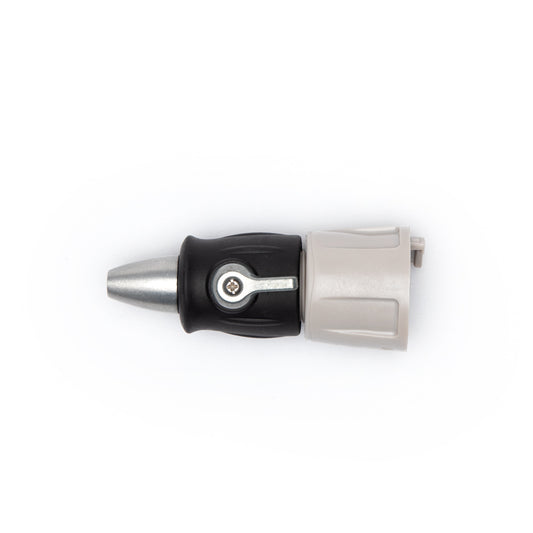
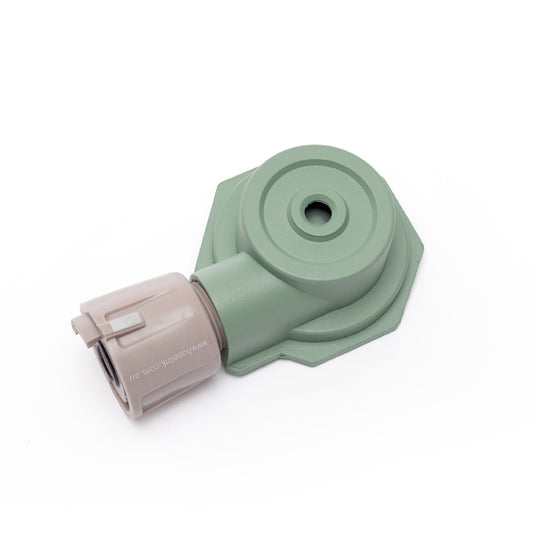
Classic Round Sprinkler
10. Increase yields
If your garden is receiving lots of extra nutrients, an increased number of pollinators, and fewer pests, chances are your harvest will increase!
Planting diversity is not only good for the health of your garden, but also for you and your family.
It is very beneficial to eat a wide variety of fruit and vegetables to access more vitamins, minerals, and nutrients.
Can you just plant everything together?
Not everything will co-exist and thrive together. Some plants may compete for light, nutrients or inhibit the growth of others. The best way to create a thriving and diverse ecosystem is to carefully select plants that will have many positive interconnected relationships. You want to have a guild or group of plants and animals that work together to benefit one another. It can be a good idea to research and try adding a few different combinations at a time.
Some relationships between plants may be:
- Wind protection
- Summer shade
- Provide nutrients
- Attract pollinators
- Provide ground cover to reduce moisture loss
- Offer climbing structures
How do you create diverse thriving gardens at home?
The best place to start increasing the diversity of your garden is by interplanting herbs and edible flowers into your vegetable patch. Herbs are great at repelling unwanted pests and edible flowers will attract more pollinators to your garden. Herbs and flowers tend to be low-lying or smaller plants, so they will not compete as much for space and nutrients. This may take some trial and error, but problem-solving is the best way to learn how to garden. Don’t be afraid to give things a go and reassess as you learn. Top tips:
- Mimic nature
- Get creative
- Experiment
- Integrate planting

We want to create sustainable gardens that consistently produce food. Poor soil and lack of diversity can mean plants will grow slowly, be susceptible to pests and disease, and require more care and maintenance. They will need to be constantly fed, watered, and rescued from unwanted bugs. It’s a tiring concept that is not sustainable long term.
Supporting diversity and creating resilient systems will help your garden grow abundant produce with less effort and force. This means we can put in less and less work over time, and receive more and more food. I know which way I would rather grow!
This will, in turn, make the process a lot more enjoyable for you and you’ll be able to enjoy thriving gardens for many years to come.
Happy gardening!

